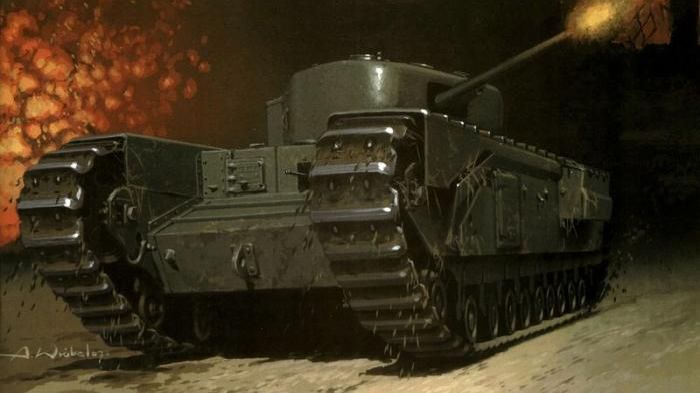|
|
Tank Drawing
|
During the Cold War, tension between the Warsaw Pact countries and North Atlantic Treaty Organisation (NATO) countries created an arms race that ensured that tank development proceeded largely as it had during World War II. The essence of tank designs during the Cold War had been hammered out in the closing stages of World War II. Large turrets, capable suspension systems, greatly improved engines, sloped armour and large-calibre (90 mm and larger) guns were standard. Tank design during the Cold War built on this foundation and included improvements to fire control, gyroscopic gun stabilisation, communications (primarily radio) and crew comfort and saw the introduction of laser rangefinders and infrared night vision equipment. Armour technology progressed in an ongoing race against improvements in anti-tank weapons, especially antitank guided missiles like the TOW.
Medium tanks of World War II, evolved into the main battle tank (MBT) of the Cold War and took over the majority of tank roles on the battlefield. This gradual transition occurred in the 1950s and 1960s due to anti-tank guided missiles, sabot ammunition and high explosive anti-tank warheads. World War II had shown that the speed of a light tank was no substitute for armour and firepower and heavy tanks were as vulnerable as medium tanks to newer weapon technology, rendering them obsolete.
In a trend started in World War II, economies of scale led to serial production of progressively upgraded models of all major tanks during the Cold War. For the same reason many upgraded post-World War II tanks and their derivatives (for example, the T-55 and T-72) remain in active service around the world, and even an obsolete tank may be the most formidable weapon on battlefields in many parts of the world. Among the tanks of the 1950s were the British Centurion and Soviet T-54/55 in service from 1946, and the US M48 from 1951. These three vehicles formed the bulk of the armoured forces of NATO and the Warsaw Pact throughout much of the Cold War. Lessons learned from tanks such as the Leopard 1, M48 Patton series, Chieftain, and T-72 led to the contemporary Leopard 2, M1 Abrams, Challenger 2, C1 Ariete, T-90 and Merkava IV.
Tanks and anti-tank weapons of the Cold War era saw action in a number of proxy wars like the Korean War, Vietnam War, Indo-Pakistani War of 1971, Soviet war in Afghanistan and Arab-Israeli conflicts, culminating with the Yom Kippur War. The T-55, for example, has seen action in no fewer than 32 conflicts. In these wars the USA or NATO countries and the Soviet Union or China consistently backed opposing forces. Proxy wars were studied by Western and Soviet military analysts and provided a grim contribution to the Cold War tank development process.
|
|









